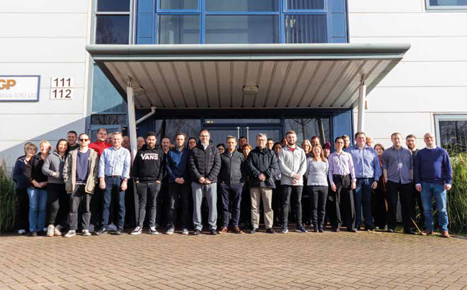The Creation of KH Manufacturing
In 1992 Celestion International, along with another British loudspeaker company, KEF, united under the banner of Kinergetics Holdings, Ltd. whose major shareholder was Hong Kong’s Gold Peak. Ultimately the company evolved into GP Acoustics, with the companies both wholly owned by Gold Peak.
June 1996 saw an announcement Celestion would be split into two parts: the Professional Division (musical instrument speakers, transducers for professional audio and finished sound reinforcement systems) and the Consumer Division (HiFi and home theatre), with KEF’s managing director at that time appointed managing director of the latter. And soon after the decision was taken to consolidate HiFi into a single brand for the new millennium. With KEF appearing to be the dominant brand, it became increasingly clear that the writing was on the wall for Celestion HiFi.
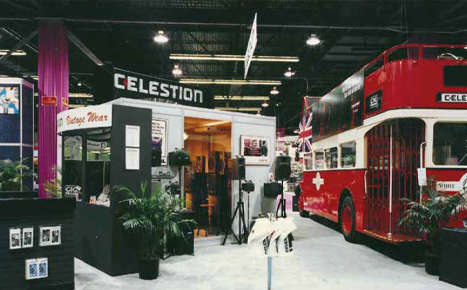
Focusing on Technology
In the engine room that was Celestion’s Foxhall Road R&D department, developments were surging forward as the adoption of new software tools brought additional impetus. In 1992 the company’s first mechanical Finite Element Analysis (FEA) was set-up, a computerised method for predicting how a product might react to real-world forces such as vibration, which opened up immense possibilities for future acceleration and streamlining of the development process.
A continued investment in R&D throughout the ‘90s and into the new millennium saw further innovations in compression drivers as well as pioneering work with neodymium magnet technologies, ultimately becoming a catalyst for Celestion’s growth in the pro audio market.
The SR Series was followed by new sound reinforcement systems including the KR, CR, Road and CX, but eventually, the company began to tilt more towards transducers and away from finished cabinet systems. Initially with a focus on guitar speakers for both OEM customer and retailers, moving high-volume manufacturing to Asia while preserving a “Designed in the UK” focus, building marquee products in England. More emphasis was also being placed on sound reinforcement transducers with development of low frequency woofers and high frequency compression drivers again for both OEM customers and also for the retail market.
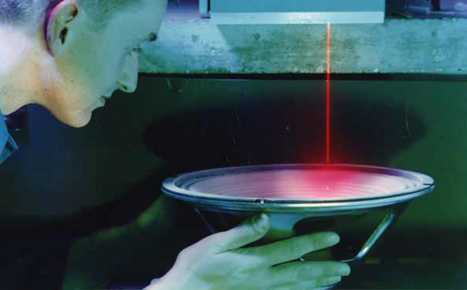
A Fresh Start
The shift in strategy coincided with a move to a brand-new purpose-designed factory on the outskirts of Ipswich. Replacing the tired old industry environment of Foxhall Road, with a newer, smaller premises built to better facilitate Research and Development.
As the MI side of the business went from strength to strength, the 2000s saw the launch of Celestion’s Partners in Tone guitar speaker endorsement campaign; today the program boasts a line-up of more than 200 artists and producers, including legends Eric Clapton, Brian May, Robben Ford, Tony Iommi, and Steve Vai.
Celestion continued to expand its portfolio of American clients for both guitar and PA products, throughout the 2000s. It was a boom time for guitar gear; during this time Celestion debuted the Heritage Series, which paid homage to the 1960s sound. This was quickly followed by the Gold, a high-powered alnico speaker, the G12 EVH signature speaker for Edward van Halen, and later followed up with the Creamback range of higher-powered range of vintage sounding guitar speakers.

A Focused Strategy
By 2006, under the leadership of Nigel Wood, the company finally exited its PA systems and consumer hi-fi businesses, turning its focus toward the design and manufacture of a broader and more comprehensive range of sound reinforcement transducers alongside the established and successful guitar and bass speakers.
A streamlined focus on transducers brought major advances in compression driver technology including the introduction of the patented deep drawn diaphragm and maximum modal suppression phase plug for ultra-low distortion HF performance.
In 2016 Celestion debuted the Axi2050 “axiperiodic” compression driver, a revolutionary high-power, high-output transducer capable of reproducing an ultra-wide frequency range of 300 Hz to 20 kHz without the need for a mid-band crossover.
Throughout the 2000s, the company collaborated with a growing roster of leading sound reinforcement companies, developing innovative, often bespoke, pro audio transducers for a broad range of applications. Today, more than two thirds of the company’s business is in this market segment: manufacturing low frequency, high frequency and full range PA products. Celestion is perhaps the largest branded manufacturer of compression drivers and one of the leading designers of coaxial speakers, making good on the company’s intention to become a force to be reckoned with in the pro audio world.
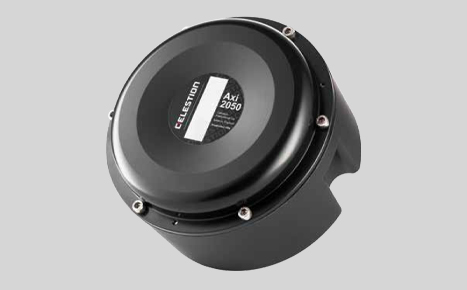
Celestion Digital
Reacting to the needs of the MI marketplace, the 2010s saw Celestion diving deep into digital technologies. Digital modelers evolved from simple combo amps with built-in EQ and effects into sophisticated, standalone computing devices featuring sophisticated DSP, largely enabled by the impulse response (IR), a digitized “snapshot” of an acoustic space or a piece of equipment’s acoustic behavior.
That same year, Celestion launched CelestionPlus.com, offering Celestion guitar speaker and bass speaker tones as downloadable impulse responses, and in 2020 introduced SpeakerMix Pro plug-in, which represented a major leap forward in guitar speaker tone emulation when used together with a new generation of impulse responses developed in-house: Dynamic Speaker Responses.
The company’s newest UK-built guitar speaker, being produced in time for the company’s 100th anniversary celebrations in 2024, is a tribute to the silver alnico speakers of the late 50s and early 60s. Named the 100, it was voiced to be as close as possible to the speakers that were the inspiration for the original G12 guitar speaker—but boasts a beefier power rating of 30 watts.
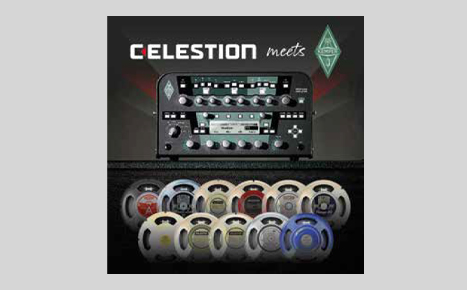
A Bright Future
As Celestion continues to produce iconic speakers like the Alnico Blue, Greenback and Vintage 30 that have defined its heritage, it further expands into the PA market, focusing on new driver innovations. Most recently this has included the Ten2 (Ten Squared or TSQ) prestige range of precision low-frequency speakers both designed and manufactured in the UK. The first range to be built using the newly commissioned, robotically assisted production line.
Much has changed within Celestion over the past 100 years. Ownership and leadership have transitioned, and markets have shifted. Yet, at its core, the company’s essence remains the same as it was when Eric Mackintosh and Cyril French pioneered one of the world’s initial cone loudspeakers. Through its unwavering pursuit of sonic perfection and relentless drive for innovation, Celestion has left an indelible imprint on the landscape of sound technology and solidified a legacy that resonates across generations of musicians and industry professionals alike.
